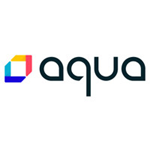Yugabyte announces CIS benchmark for YugabyteDB to elevate data security standards
Member Article
First Distributed SQL Database Vendor to Complete the Benchmark
Yugabyte, the distributed PostgreSQL database company for cloud native applications, today announced that the Center for Internet Security (CIS) has published a security benchmark for the YugabyteDB database in collaboration with the Yugabyte security team. The new YugabyteDB CIS Benchmark introduces users of the open source database to security configuration and operational best practices to better protect their business-critical data, reduce the probability of data compromise, and enhance their cybersecurity posture.
CIS benchmarks provide globally recognized best practices to guide security practitioners in effectively configuring, implementing and managing their cybersecurity defenses. Publishing the CIS Benchmark for YugabyteDB underscores Yugabyte’s commitment to enabling our customers to define, implement, and follow a comprehensive security program using their high-performance distributed PostgreSQL database solution.
“As the digital landscape evolves, ensuring the utmost security and performance of your database is crucial,” said Maurice Olsen, Sr. Director, Information Security and Compliance at Yugabyte. “The CIS Benchmark for YugabyteDB showcases our commitment to meeting stringent industry security standards, as we provide our customers with a secure, highly performant, and resilient database, capable of safely managing a large volume of critical data.”
CIS BenchmarksTM are consensus-developed secure configuration guidelines for hardening operating systems, servers, cloud environments, and more. The CIS Benchmarks include more than 100 configuration guidelines across 25+ vendor product families. Benchmarks are created through a unique consensus-development process, where subject matter experts, security professionals, and technologists from around the world contribute to the development to help protect systems against threats more confidently.
The CIS Benchmark for YugabyteDB was a collaborative effort between Yugabyte and the…




